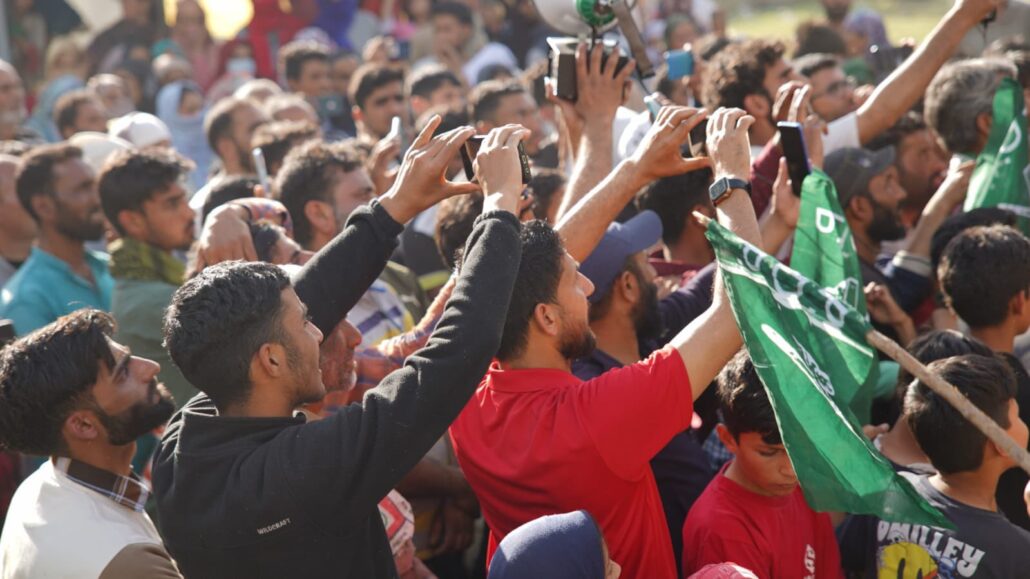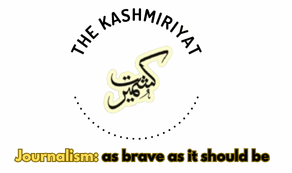
In the lately vibrant political landscape of Kashmir, Engineer Rashid’s party is garnering substantial support through energetic rallies and roadshows in the Baramulla Lok Saba seat, despite the leader’s detention in Delhi’s Tihar jail since August 2019. Social media platforms reverberate with momentum rallying behind Rashid, as influencers both online and on the ground echo messages like “joined Er. Rashid,” resonating deeply within public discourse.
These fervent displays of support, characterized by frequent public rallies and vocal sloganeering, depict a resounding support for Rashid, a former member of the legislative assembly in Jammu Kashmir. Notably, even erstwhile pro-resistance academicians in Kashmir are aligning themselves with his cause, viewing his anticipated victory as a significant “political statement”.
In the recent past, we have seen other regional parties including the National Conference, People’s Democratic Party and People’s Conference address massive gatherings in parts of Kashmir. Amidst this palpable enthusiasm backing, questions arise regarding the ease of electoral victory. Does the sheer presence of crowds and fervent support translate directly into electoral success? Is the essence of electoral politics solely encapsulated in mobilizing masses?
While the sizable gatherings signal a formidable show of support, the complexities of electoral dynamics warrant a more nuanced analysis beyond the spectacle of public fervor. In this essay, we take a look at some of them.
Amidst the fervor of the 2014 parliamentary elections, Narendra Modi, the then prime ministerial candidate, launched an extensive campaign trail, captivating crowds with his speeches. Enthusiastic supporters, eager to catch a glimpse of the emerging political luminary, thronged to his rallies, often resorting to unconventional points like building ledges and hoardings.
However, while Modi’s magnetic presence undoubtedly commanded attention and reflected his burgeoning influence, the correlation between rally fervor and electoral outcomes remained tenuous.
In the contemporary political landscape, the spectacle of large-scale rallies, characterized by exuberance and grandiosity, often overshadows their substantive impact on voter behavior.
Contrary to popular perception, the resonance of a candidate’s message during such gatherings does not necessarily translate into electoral success. Rather, the turnout at rallies is frequently indicative of an emotion, of enjoyment, or at the best robust local party organization or substantial financial resources rather than genuine voter allegiance. Such was witnessed in Uttar Pradesh Vidhan Sabha elections in 2022. Akhilesh Yadav gathered formidable crowds during his campaign, while Yogi Adityanath’s campaign was upsetting in terms of crowds. Tejasvi Yadav, in Bihar attracted huge gatherings in his rallies, however, Nitish Kumar, who was merely seen in public rallies, almost bagged an equal number of seats.
Historically, public rallies held greater significance in the absence of widespread communication channels, with political leaders meticulously crafting their public image through carefully curated speeches, however, the advent of social media has revolutionized political communication, offering voters direct access to leaders and diminishing the relevance of traditional rally platforms.
One of the biggest reasons for the triumph of the Bhartiya Janta Party since 2014 has been its existence at the micro-levels. Its parent organisation RSS has a huge presence in the cow belt (north Indian states), which provides it an edge over the other political players.
The BJP does not merely engage in social media outreach, public rallies and banking on speeches and manifestos as the enduring appeal of such events has diminished over time, with voters increasingly disillusioned by the rhetoric espoused during rallies and the delayed release of manifestos, emblematic of a broader skepticism towards political promises.
Fueled by an unwavering network of dedicated workers, many of whom hail from the ideological bastions of Rashtriya Swayamsevak Sangh (RSS) or Vishwa Hindu Parishad (VHP), the BJP’s campaign machinery operates with relentless vigor.
A deeper examination reveals that the secret sauce behind the BJP’s success, as well as the RSS, lies in their steadfast commitment to unity, suggests Vinay Sitapati, a political scientist, in his latest book “Jugalbandi: The BJP Before Modi”. The case was no different with Congress, however, over the years, it has been reiterated by political experts that Congress foot soldiers (cadre) is scattered, weak and disillusioned, resulting in its constant defeats.
While rallies may serve as a spectacle reminiscent of communal festivities, their substantive impact on voter sentiment remains questionable. Despite the fervent applause and ostensible support on display, the ultimate verdict lies in the ballot box, where electoral outcomes reflect the nuanced interplay of various factors beyond the spectacle of public gatherings.




